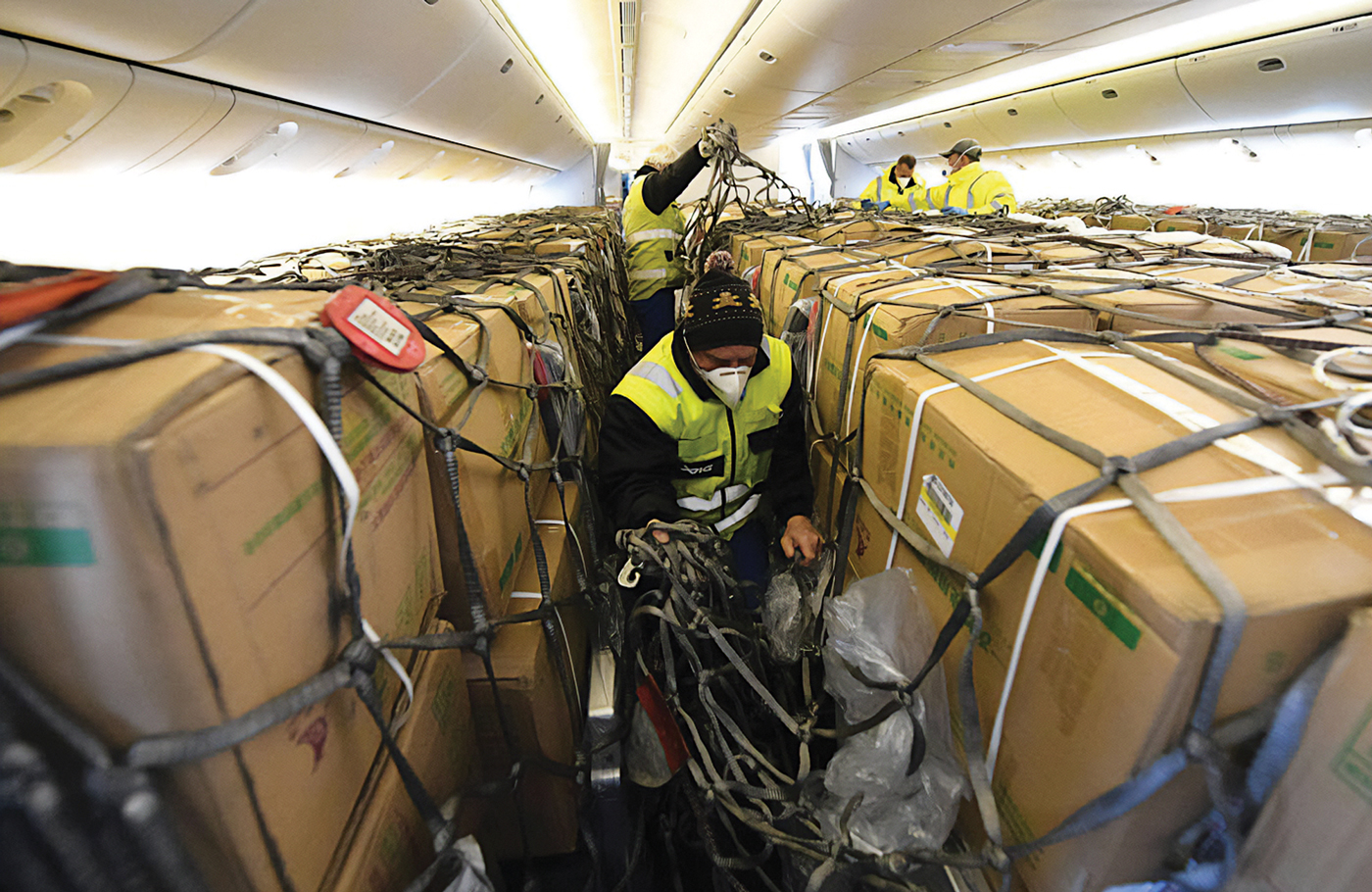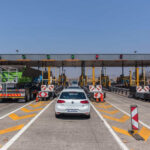Make way for the merchandise
Make way for the merchandise
Air transport, like so many other industries, has been hit hard in the last year, but some impressive innovations have emerged. JACO DE KLERK takes to the sky to see what kept this industry airborne.
Due to the current state of the travel business, many airlines had to think out of the box – temporarily using their passenger aircraft to move cargo. But the conversions didn’t involve the carriers merely plonking the parcels on the passenger seats …
Airbus developed a modification for the A330 and A350 family of aircraft, which enabled airlines to install freight pallets directly onto the cabin floor seat tracks, after removal of the economy-class seats.
This solution is helping airlines to keep going during the pandemic and also alleviate the global shortage of “belly-freight” air cargo capacity due to the widespread grounding of long-haul aircraft.
In addition, it is helping the industry to address the high demand for humanitarian flights to transport large quantities of medical equipment and other supplies rapidly over large distances to where they are needed.
Compared with loading cargo onto seats, this Airbus solution facilitates easier and quicker loading and unloading operations, as well as reduced wear and tear to the seats themselves. Other important benefits include the added security of robust fire protection and the load restraint capability to prevent anything from shifting in flight.
The modification is packaged for operators as an Airbus service bulletin. Under this arrangement Airbus defines the engineering work scope and also manages the process for obtaining the one-time certification from the necessary authorities.
Its scope includes the removal of the seats and inflight entertainment, installation of cargo pallets and associated safety equipment – and also the re-installation of the original passenger cabin elements for reverting back to passenger operations. The service bulletin approach will also be valid beyond the aftermath of the pandemic.
But there are those that are tackling these endeavours on a more permanent basis. From Air Canada to China’s CDB Aviation, airlines and leasing firms are rushing to permanently convert older passenger jets into freighters, betting on a boom in e-commerce as the value of used planes tumbles.
That has created a huge opportunity for passenger-to-freight (P2F) conversion companies, including Singapore Technologies (ST) Engineering, Israel Aerospace Industries (IAI) and US-based Aeronautical Engineers.
Aviation analytics firm Cirium expects that the number of P2F conversions globally will rise by 36% to 90 planes at the end of 2021, and to 109 planes in 2022. “There is an increase in newer-generation programmes, notably the 737-800 and A321 as well as the A330, although older types like the 767 continue to see strong demand, driven in the past few years by Amazon building their own fleet,” explains Chris Seymour, Cirium head of market analysis.
The market value of 15-year-old planes has fallen by 20% to 47% during 2020, depending on the model, according to advisory firm Ishka, which makes freighter conversions more attractive. These conversions also go a step beyond the cheaper temporary conversions.
The permanent conversions are a financial bet that air freight demand, which was weak before Covid-19, will remain strong for years to come as shoppers turn to e-commerce. The airline industry estimates it will take until 2024 for passenger traffic to recover to 2019 levels.

Freight markets are notoriously volatile, however, and have been beset by extended downturns; shortage can quickly turn into overcapacity, analysts warn.
Normally about half of the world’s cargo is carried in the bellies of passenger planes, but the hit to demand has left the world more reliant on dedicated freighters.
“2020 has seen record-high freighter aircraft utilisation and our view is that the pandemic has accelerated the long-term structural shift towards increased e-commerce demand,” says CDB Aviation chief executive Patrick Hannigan.
Boeing forecasts that more than 60% of freighter deliveries over the next 20 years will be conversions rather than new widebody freighters like the 777. (Narrow-body freighters are almost all conversions.)
The conversion boom is also helping aviation maintenance, repair and overhaul groups offset some of the business lost as a result of the decline in passenger flights.
Such conversions generally cost millions of dollars on top of the cost of the aircraft and take three to four months, says ST Engineering Aerospace president Jeffrey Lam.
His company is ramping up capacity, with plans to convert at least 18 A321 planes this year, rising to around 25-30 annually in the future, up from single digits last year.
“We are all booked out for 2021 for aircraft conversions,” Lam points out. “The first slots are well into 2022.”
ST Engineering also may add converted freighters to its leasing business, which has focused on passenger planes, he says.
IAI can convert 18 or more 767s a year and produces most of those used by Amazon.com.
“We are investing a lot of effort to meet the market demand,” says Yosef Melamed, general manager of IAI’s aviation group, which is also working on the first-ever P2F conversion of the larger 777-300ER as part of a 15-plane contract with GECAS, an Irish-American commercial aviation financing and leasing company.
“What happened with the coronavirus outbreak, commercial flights were significantly reduced … international flights dropped to nearly zero,” he notes. “So, the only solution for transporting cargo, and in light of the trend that people are staying at home and ordering online, is cargo planes.”
Aeronautical Engineers is also seeing a dramatic increase in demand for conversions, says Robert Convey, its senior vice president for sales and marketing, citing a 30% to 40% fall in the value of planes.
“We’re seeing younger and younger aircraft being converted due to the large number of passenger aircraft that have been grounded and are not likely to return to service in the near future.”
Grant Stevens, vice president of corporate services at Canada’s KF Aerospace, adds that increased demand for P2F conversions, which grew from about 10% of its business before the pandemic to about half today, has helped offset a decline in requests for aircraft maintenance. “We have been able to employ most of our staff by doing conversions.”
So, while the pandemic has dealt a massive blow to air transport the world over, the industry will take off again as it makes way for the merchandise.
Published by
Jaco de Klerk
focusmagsa




